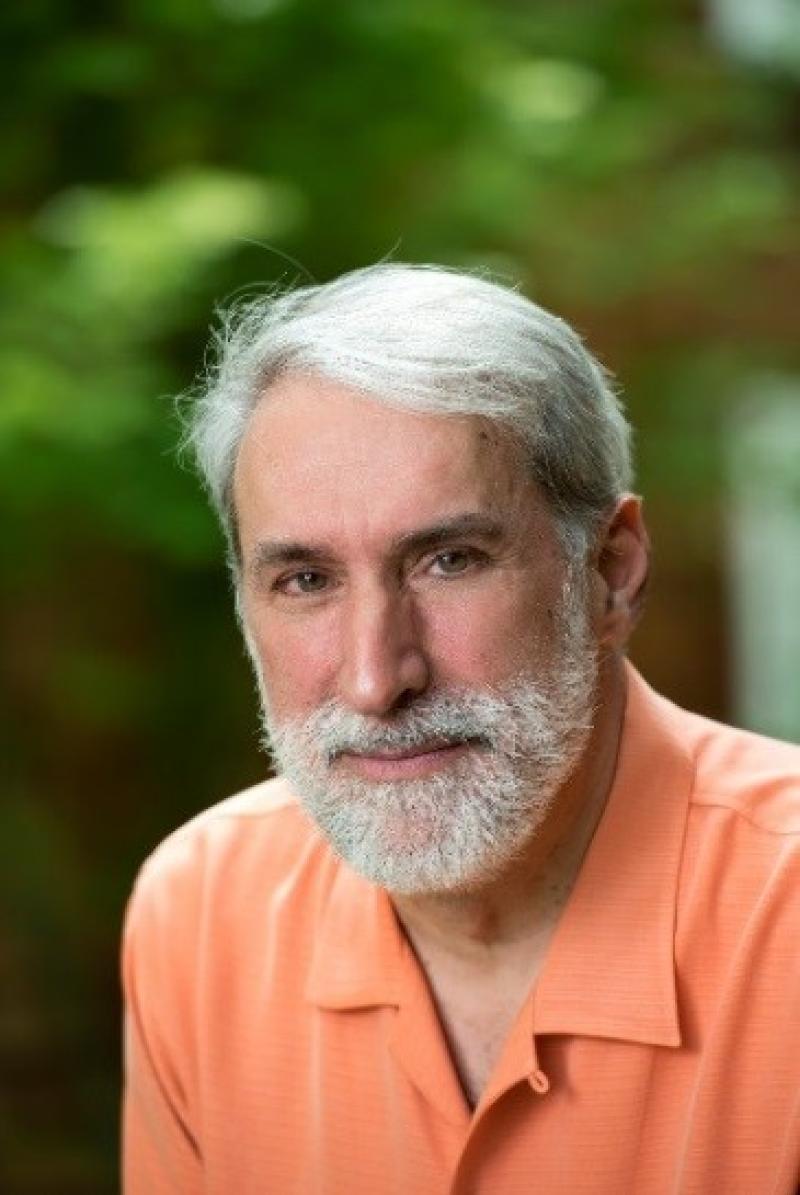2016 Evans Lecturer: Professor Daniel Nocera

Schedule of Events
Thursday, October 6th, 2016
"A Complete Artificial Photosynthesis" - 4:00-5:15pm, MP1000
The artificial leaf was invented to accomplish the solar fuels process of natural photosynthesis – the splitting of water to hydrogen and oxygen using sunlight. To create the artificial leaf, four properties of the oxygen evolving complex of Photosystem II (OEC-PSII) were mimicked: An artificial catalyst was created that:
possessed the same cubane structure of OEC-PSII;
self-assembled from water;
possessed the proton-electron inventory of the Kok cycle used by the OEC-PSII for water splitting;
was self-healing.
The latter property of self-healing is a critical discovery as it allows for the facile integration of the artificial OEC catalyst, together with a hydrogen evolving catalyst (HEC), onto a silicon (Si) wafer in a buried junction configuration. The OEC | triple-junction Si | HEC configuration gives rise to the artificial leaf, which produces hydrogen and oxygen when solar light shines on neutral water, at atmospheric pressure and room temperature.
But natural photosynthesis does more than split water. Natural photosynthesis has evolved to combine the hydrogen, produced from solar-driven water splitting, with carbon dioxide to produce biomass. We have achieved an authentic and complete artificial photosynthesis. Using the tools of synthetic biology, a bio-engineered bacterium has been developed to convert carbon dioxide, along with the hydrogen produced from the artificial leaf, into biomass and liquid fuels, thus closing an entire artificial photosynthetic cycle. This hybrid microbial | artificial leaf system scrubs 180 grams of CO2 from air, equivalent to 230,000 liters of air per 1 kWh of electricity. This hybrid device, called the bionic leaf, operates at unprecedented solar-to-biomass (10.7%) and solar-to-liquid fuels (6.2%) yields, greatly exceeding the 1% yield of natural photosynthesis.
Reception and Poster Session in CBEC Lobby following lecture
Friday, October 7th, 2016
"Proton-Coupled Electron Transfer Chemistry of Energy Conversion Catalysis" - 4:10-5:30pm, 130 CBEC
Solar-to-fuels generation requires the rearrangement of stable chemical bonds with light as the impetus for the fuel-forming reaction. All such reactions, regardless of the specific fuel, require the transfer of multiple electrons and protons. Energy barriers to such bond rearrangements are minimized only if electrons are efficiently coupled to protons. Catalysts can mediate this coupling, and as well as it does so, determines the solar-to-fuels efficiency.
We have created molecular and heterogeneous catalysts to enable us to study the PCET activation mechanism associated with oxygen evolution reaction (OER), oxygen reduction reaction (ORR), hydrogen evolution reaction (HER) and the carbon dioxide reduction reaction (CDR). Electrochemical and photochemical techniques have been constructed to afford a PCET-mechanistic description of associative O–O and H–H bond-formation and of dissociative O–O and C–O bond-cleavage, as these are the crucial activation processes for OER, HER, ORR and CDR, respectively. The molecular complexes incorporate critical chemical and physical properties of heterogeneous energy conversion catalysts, providing a launch point to begin understanding the mechanisms of heterogeneous catalysts at a detailed atomistic level. The combination of a portfolio of experiments spanning PCET mechanism from the molecular to the solid state provides a powerful insight to the crucial steps for the efficient conversion of small molecules to fuels.
The William Lloyd Evans Lectures
The Evans Lecture at Ohio State University was established in 1961 upon the dedication of Evans Laboratory, in recognition of the late William Lloyd Evans for his distinguished service to the Department of Chemistry. Each year, a faculty committee has been charged with selecting a chemist of outstanding international stature to receive the Evans Award and present the Evans Lecture.
William Lloyd Evans (b. 1871) received his M.S. degree in 1896 from Ohio State and joined the Chemistry Department faculty in 1905 after having received his Ph.D. degree that year under Professor Ulric Nef at the University of Chicago. As an Assistant Professor in charge of the course in General Chemistry, “Billy” Evans was soon recognized as an especially effective and inspiring teacher. He rose to the rank of Full Professor in 1911, and his service to the Department was interrupted only by a two-year period of military service during World War I at Edgewood Arsenal. In 1928, he was named Chairman, succeeding Professor William McPherson.
During his tenure as Chairman, a post that he held until 1941, he guided the Department toward increased emphasis on graduate research. He encouraged the development of a strong research-oriented faculty and the expansion of research through involvement of outside industry and government agencies in sponsored programs. Following his retirement in 1941, Professor Evans was elected President of the American Chemical Society, and he continued his work in chemistry during active retirement until his death in 1954 at the age of 83.
Previous Lecturers:
2015 - Angela Gronenborn
2014 - Carol Robinson
2013 - Jacqueline K. Barton
2012 - Chris Dobson
2011 - Sumio Iijima
2010 - Carolyn Bertozzi
2009 - Professor W. E. Moerner
2008 - Doug Rees
List of all Previous Lectures back to 1962 [pdf]
Note: This lecture was made possible by financial support from the Dr. Robert H. Lawrence Jr. Endowed Fund in Chemistry, the Dr. Kurt L. Loening Endowment Fund in Chemical Nomenclature and Chemical Information, the Chemistry Lecture Fund, as well as numerous other donors.
[pdf]- Some links on this page are to .pdf files. If you need these files in a more accessible format, please email support@chemistry.ohio-state.edu. PDF files require the use of Adobe Acrobat Reader software to open them. If you do not have Reader, you may use the following link to Adobe to download it for free at: Adobe Acrobat Reader.
